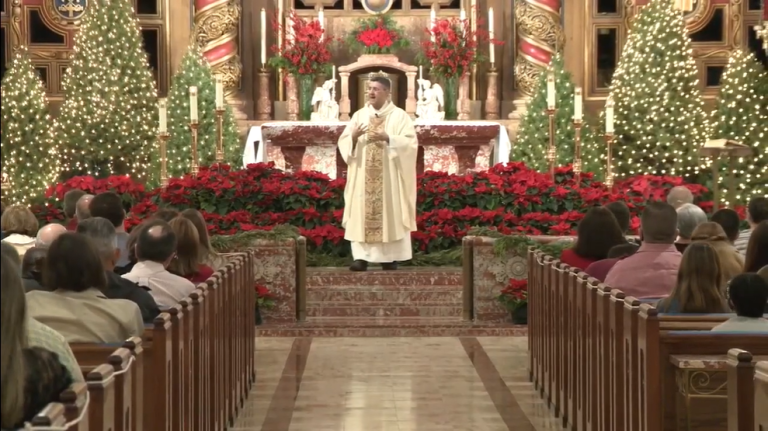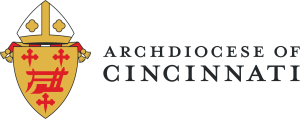The season of Advent is filled with unique symbols, colors, and liturgical oddities. If we know a bit about them, then we can share them with others. More than that, a knowledge of these “signs of the time” can help make Advent a season of genuine peace and holy preparation.
Why “Advent”?
The word “Advent” comes from the Latin phrase ad venire, which means “to come towards.” With each day of Advent, we get closer and closer to the coming of Jesus, to that radical “coming towards” in which God got as close to us as He possibly could. Advent should be a reaching out, a drawing near, and a yearning for someone who can meet every human desire.
The Advent Wreath
It is customary to celebrate Advent by displaying a special wreath and lighting candles in our homes. Parishes too will often have a grand wreath with candles lit by a parish family to begin each Sunday Mass. But why a wreath? Why four candles? And why are three of them purple and one pink?
In his article “The History of the Advent Wreath,” Fr. William Saunders provides this short historical account of the wreath itself:
“There is evidence of pre-Christian Germanic peoples using wreathes with lit candles during the cold and dark December days as a sign of hope in the future warm and extended-sunlight days of Spring. In Scandinavia during winter, lighted candles were placed around a wheel, and prayers were offered to the god of light to turn ‘the wheel of the earth’ back toward the sun to lengthen the days and restore warmth.”
By the Middle Ages, Christians had taken up this practice and infused it with new meaning as a way to prepare for Christmas. Since Jesus is the light of the world, it is fitting that the wreath would produce more and more light the closer we get to the celebration of His birth.
The four candles represent the four weeks of Advent. Three of them are purple, a color associated with royalty (the King is coming!). One of them is rose, a symbol of our rejoicing. The circular shape of the wreath, which has no beginning or end, symbolizes the eternity of God. The leaves of the wreath, derived from evergreen trees, symbolize the immortality of the soul and the everlasting life found in Christ.
Gaudete Sunday
This is the third Sunday of Advent. It is named after the Entrance Antiphon for Mass on that day, which begins with the Latin words, “Gaudete in Domino semper!” – “Rejoice in the Lord always!” After two weeks of purple vestments, a new color breaks through. The candle on the wreath is pink (or, to be precise, rosacea). The priest may even wear rose-colored vestments. It’s so rare and bright, it’s like an exclamation in a quiet room or a shaft of light in the darkness. It’s a shock to our senses. It awakens us and reminds us that Jesus is near.
The Jesse Tree
The “Jesse Tree” is a small tree you set on a table and use to tell the Story of Salvation History. It’s called a “Jesse” tree because this story is Jesus’ story, and Jesus is the one who Isaiah spoke of when he said:
“There shall come forth a shoot from the stump of Jesse,
and a branch shall grow out of his roots.
And the Spirit of the Lord shall rest upon him,
the spirit of wisdom and understanding,
the spirit of counsel and might,
the spirit of knowledge and the fear of the Lord. ” (Isa 11:1-2).
This is the story of God establishing covenants and drawing more and more of mankind unto Himself. This is the story of preparing the world for the Savior of the world. Each day of Advent has its own ornament, which represents an important moment from the Story (an apple, an ark, Jacob’s ladder, a burning bush, etc.). Guides for making ornaments and summarizing each event are readily available online.
Other Ways to Celebrate
The ways to celebrate Advent are only limited by your imagination. For example:
- Pray with the wreath. Gather your family around it every evening or every Sunday. Have one person recite the Gospel reading for the day, another light the candle, and then everyone sing “O Come, O Come, Emmanuel.”
- Dine by its light. Prepare special Sunday dinners where you eat by the wreath’s flickering light.
- Play with your manger scene. Move the wise men a little closer to the manger each day, until they finally arrive on the Feast of Epiphany (Sun. Jan. 6). Keep the manger empty until Christmas Day, and in the meantime, every act of kindness by a family member results in a piece of straw for Jesus’ bed.
Whatever you do, be sure to “seize the season” so that you can share it with others and get the most out of it yourself. For more on this blessed season, see “5 Ways to Seize the Season of Advent.”
Have a Blessed Advent and a Merry Christmas!




